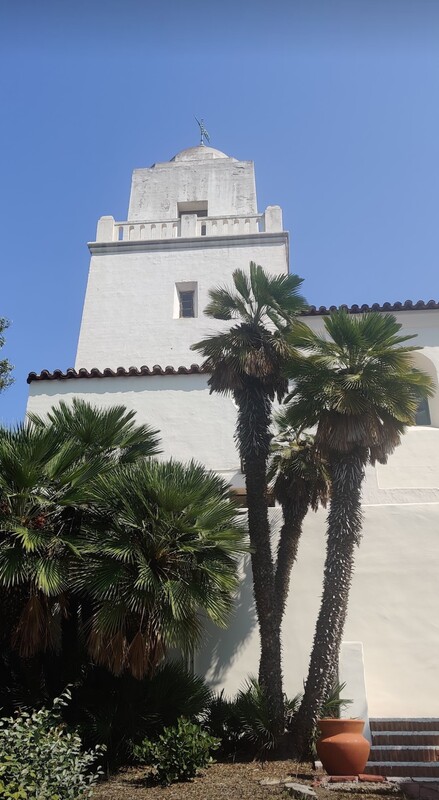Creation of The Presidio (1769-1821)
The Presidio served as the ground San Diego Mission De Alcala once stood. This mission was the first mission to be established here in California by Father Junipero Serra. He was a Spanish priest and participated in the maltreatment of Native Americans in California through his establishment of the missions. Junipero Serra was chosen for this expedition by Francisco Palou. He stated, “Go, and go comforted with the thought that you have your Superior the good Father Fr. Junipero, whom by this Patent I name as the President over Your Reverences and all of those missions.” [1] When Father Serra first arrived here in San Diego, CA, he soon found out that he was not the first person to explore this land. A Native American group known as the Kumeyaay were already residing here. So, when Father Serra established San Diego Mission De Alcala, there was a lot of anger and dispute coming from the Kumeyaay because of what Father Junipero Serra did with his mission.
The goal of this mission was to “convert him, civilize him, and exploit him.” [2]
The Spaniards used this mission to practice their religion, Catholocism, and force it onto the Native Americans who already had their own customs and practices. The Kumeyaay lost their freedom, self-expression, culture… [3] A couple of months after this mission was established the Native Americans attacked it because it became apparent that the mission was forcing Native Americans to be baptized under Catholicism. After the attack the mission was then moved further inland but still on Kumeyaay territory. San Diego Mission De Alcala was attacked at least three times, each time many more lives were lost. The Presidio also housed the military garrison that patroled and guarded the surrounding area.
By 1772, The Presidio in San Diego was no longer considered the most important settlement in Alta California. Monterey became the seat of power and the Presidio was just a “way station” on the way to the capital of Alta California. [4] While the significance of the Presidio in San Diego waned, the population grew. By 1774, over 100 civilians and soldiers lived within the walls of the Presidio. By the End of Spanish rule in Alta California in 1821, the population of the Presidio only represented 7% of Alta California's 3,000 colonialist population. The rest of Alta California experienced population booms while San Diego's stabilized. [5]
[1] Palou, Francisco. Francisco Palou’s Life and Apostolic Labors of the Venerable Father Junipero Serra, Founder of the Franciscan Missions of California, trans. C. Scott Williams (Pasadena, CA: G.W. James, 1913), 53.
[2] Heizer, Robert F. (Robert Fleming), and Albert B. Elsasser. The Natural World of the California Indians (Berkeley: University of California Press, 1980), 225.
[3] Ibid., 226.
[4] George Walcott Ames Jr., "San Diego Presidio Site: Registered Landmark #59" in California Historical Landmark Series, ed. Vernon Aubrey Neasham (Berkeley: State of California, Department of Natural Resources, Division of National Parks, 1936), 8.
[5] Jack S. Williams, "San Diego Presidio: A Vanished Military Community of Upper California" Historical Archaeology 38, no. 3 (2004): 123.


